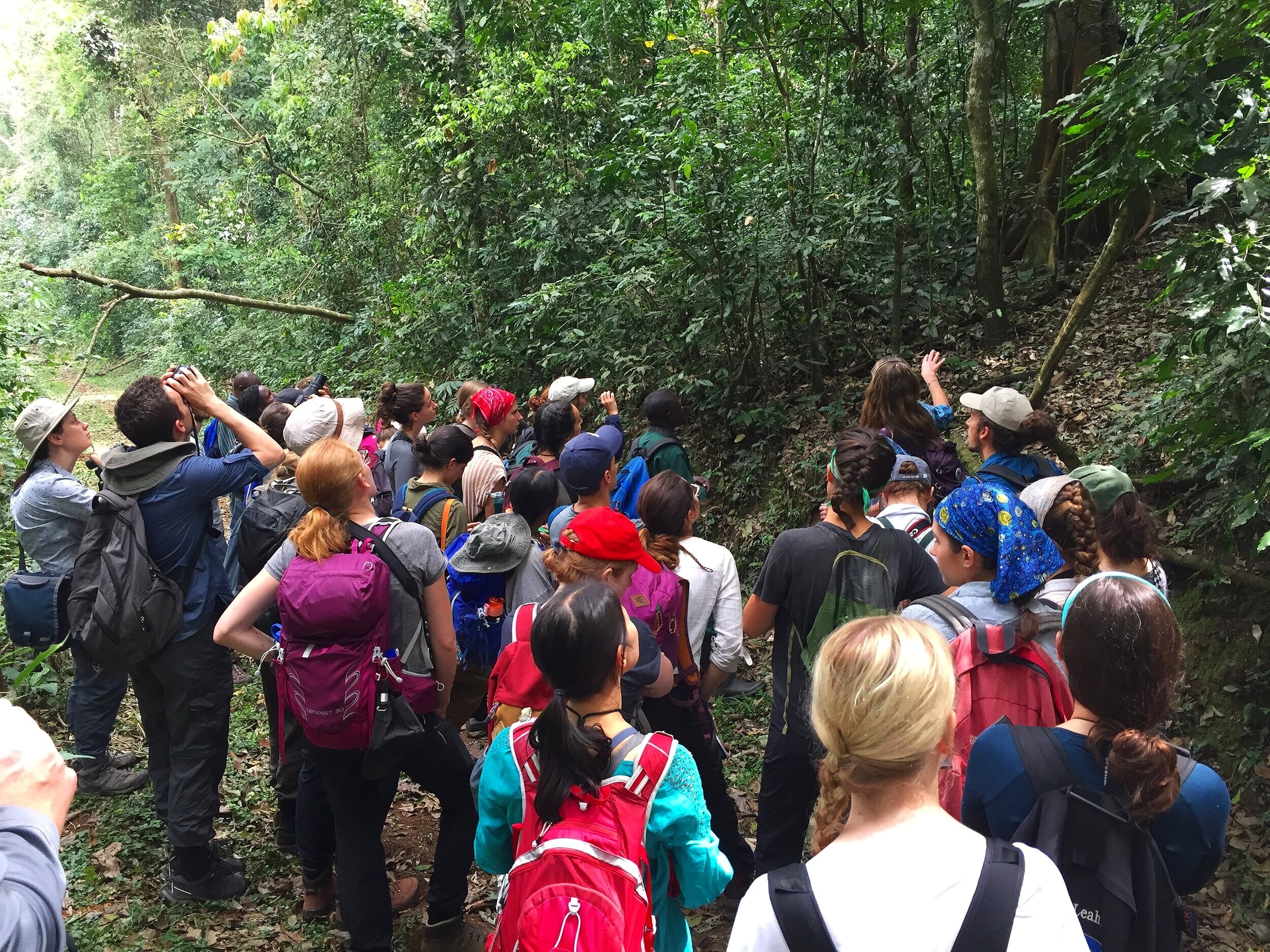Get Involved.
How you can & why you should
What’s been done
Over the course of many three decades, Colin Chapman, together with his students and colleges have established and managed many different projects working with the local communities surrounding Kibale National Park to protect the park’s biodiversity. This often requires a collaboration with local communities who reside and rely on the park for resources.
Here are some examples of the conservation efforts Dr.Chapman has done—these projects can be used as inspiration for ideas on how we can continue to conserve Kibale in the coming years!
Together with Richard Wrangham, Dr.Chapman guided the establishment of a chimpanzee ecotourism site that allows tourists to financially support the area through their visit. Tourists are charged a fee upon entry, and 20% of this goes directly back to the community. https://www.ugandawildlife.org/activities/chimpanzee-tracking-and-habituation-in-knp
Community ecotourism sites were established near volcanic crater lakes and are now run entirely by the local community for their benefit. http://www.nkuruba.com/
A forest restoration project which led to the reforestation of 7500 hectares, and also employed approximately 360 villagers for almost 10 years.
Supervising and mentoring 18 Ugandan students to carry out conservation work — one of whom became the executive director of the Uganda wildlife authority (UWA).
Dr.Chapman secured funding to build and support the Makerere University Biological Field Station which is used as a teaching facility that provides numerous field courses as well as the development of a consortium of 22 supporting Universities.
Establishing the Kibale Health and Conservation Clinic as well as the Kibale Mobile Clinic to provided healthcare, vaccinations, AIDS testing, treatment and counselling, family planning, and conservation education to villagers within and around Kibale
By engaging with people locally, nationally, and internationally through giving talks in person, on local TV channels, radio interview, etc. he has inspired people to make their own contribution to conservation. Working with the National Geographic Society to communicate these issues was particularly rewarding.
Testing the long-term effectiveness of these programs to insure they are beneficial to the communities and to the park’s plants and animals has been central to his efforts. This is essential to ensure that the efforts made in Kibale also have a global impact, as others can learn from his successes and failures.
What can be done
With help from passionate students and advocates for conservation around the world, we can continute such projects, scale them up so they have a greater impact, and continue to implement new strategies that better the environment and communities alike.
Every contribution, be it ideas, information, or donations, do help. You would be amazed how far even a small donation can go in Uganda. For example, we have been giving out over 6000 mosquito nets (primarily to women who have just given birth), helped people set them up, and checked on their use a month later. One mosquito net costs about $4 and can literally save lives.
When the coronavirus pandemic was just starting, we helped set up hundreds simple hand washing stations with each costing just over $7. We are now trying to get masks and protective equipment to all the local clinics and have the mobile clinic travel to remote villages to provide education and services. We also run an education program that puts young children through school. The value of education can be immense and feeds back into the community (e.g., one young woman went to the capital city to become a nurse, and has since returned to work around Kibale).
There are so many opportunities to create change here. We need fresh ideas and those who are eager to create a better world for the nature and people of the park. Don’t hesitate if you think you could have an impact—reach out! A little bit of money and time can go a long way.
In this photograph Nurse Lucy from the Kibale Health and Conservation clinic is talking to school children to help spread awareness about both health and conservation issues. The children learn about proper sanitation practices, and the importance of mosquito nets to prevent malaria among many other things. They also are introduced to various conservation topics, such as how a chimpanzee suffers when their hand gets caught in a snare. Chapman and his team believe that teaching the upcoming generation about the value and the wonders of nature is a very effective long-term conservation strategy.



